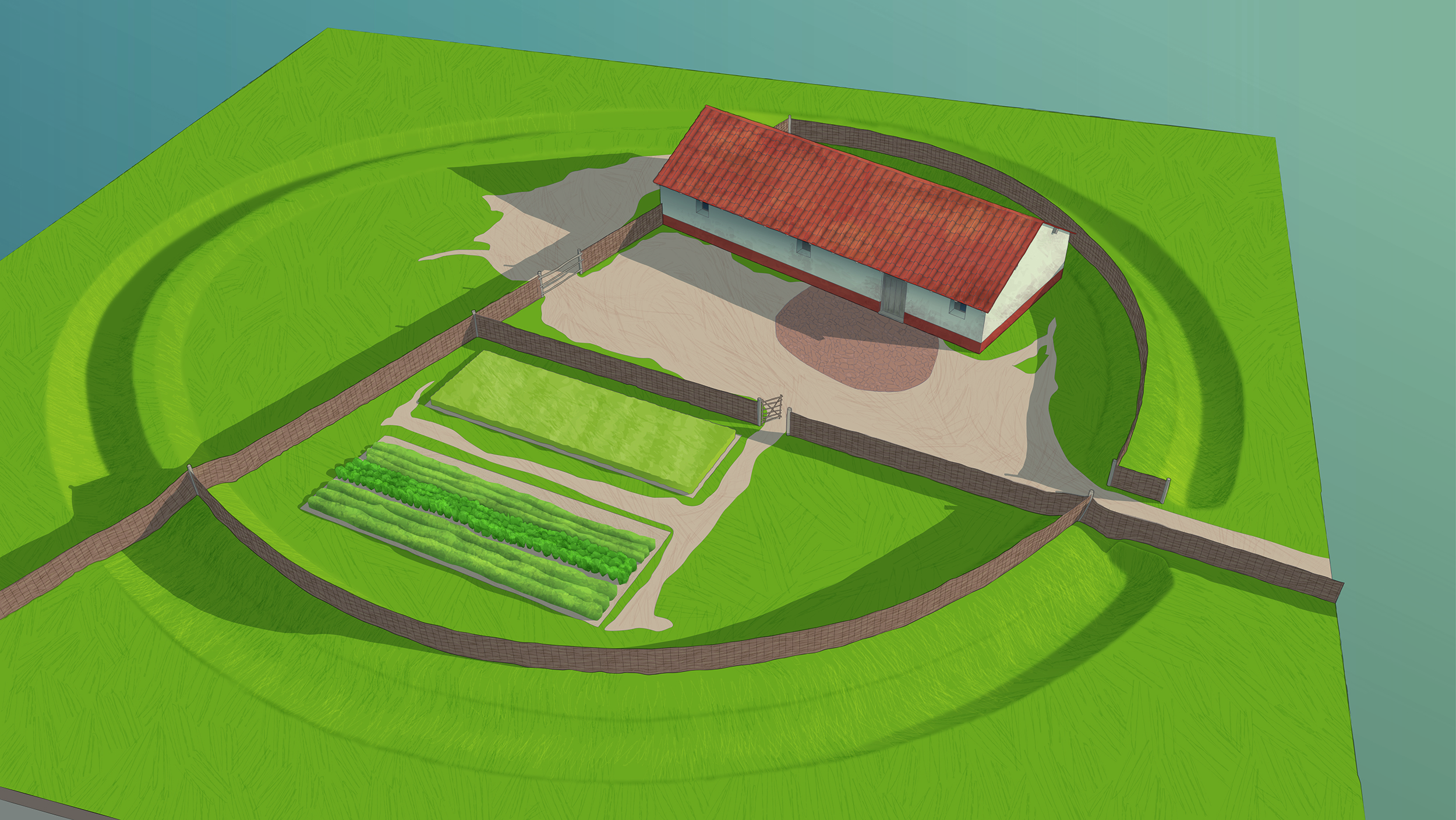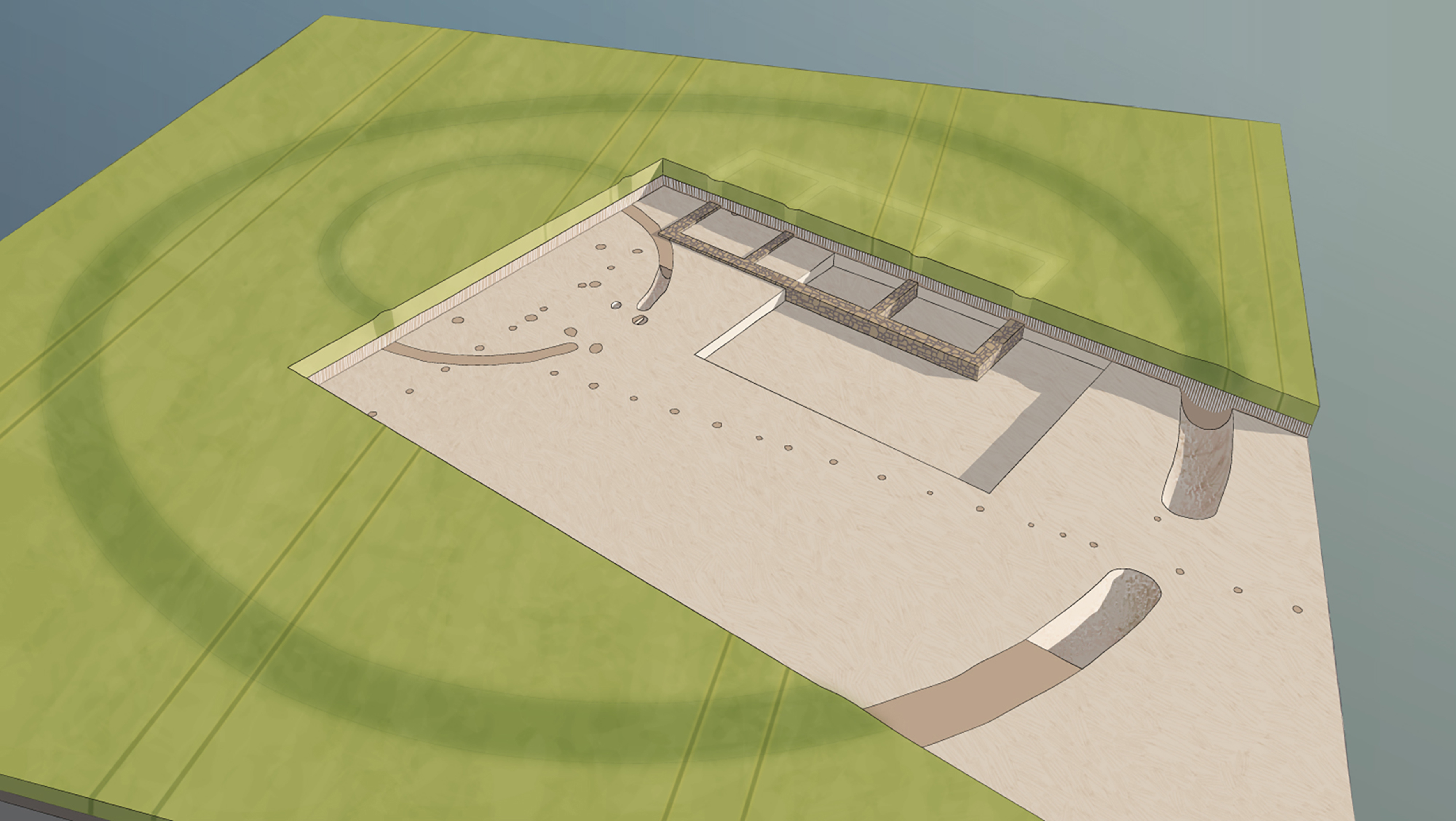Photos: Cropmarks Reveal Traces of Lost Civilizations in England
Iron Age

The next series of images show how cropmarks form. This illustration is of a small Iron Age (800 B.C.- A.D. 42) settlement that consists of a circular house surrounded by a ditch with an internal bank. A timber fence or palisade surrounds the enclosure and there's a single entrance that leads to the house, around which is an eaves-drip gulley. The two four-post structures to the sides of the house are storage for grain or other agricultural produce.
Roman Period

This illustration depicts the same place, but many years later during the Roman period (A.D. 43 – A.D. 410) . The round house is now replaced by a rectangular, stone-built house with fencing throughout to divide the gardens, field and farmhouse. The ditch is slightly backfilled and grass has grown on it. The bank is lower and less steep.
21st Century

Now, in the 21st century, this same place is revealed through cropmarks. The dark green circles represent cropmarks forming over something missing beneath the ground like ditches. Archeologists looking at this in real sites would probably guess these dark green marks date back to the Iron Age and the inner enclosure represents a roundhouse while the outer represents a ditch. The rectangular cropmark is lighter, suggesting it's something solid like a building foundation. Archaeologists would guess that it appeared later on because one corner slightly cuts into the mark of the roundhouse.
Excavation

Now, archaeologists have begun an excavation at the same site. Here, they can really see the cropmarks. Above the ditches, the crops are taller, their roots are deeper and they ripen later than surrounding areas. The opposite is seen above the solid structures: the roots are shallower. Many roundhouses weren't surrounded by a gulley, which makes them more difficult to find via aerial photography.
Get the world’s most fascinating discoveries delivered straight to your inbox.

Yasemin is a staff writer at Live Science, covering health, neuroscience and biology. Her work has appeared in Scientific American, Science and the San Jose Mercury News. She has a bachelor's degree in biomedical engineering from the University of Connecticut and a graduate certificate in science communication from the University of California, Santa Cruz.


